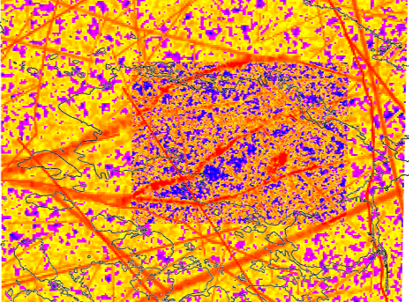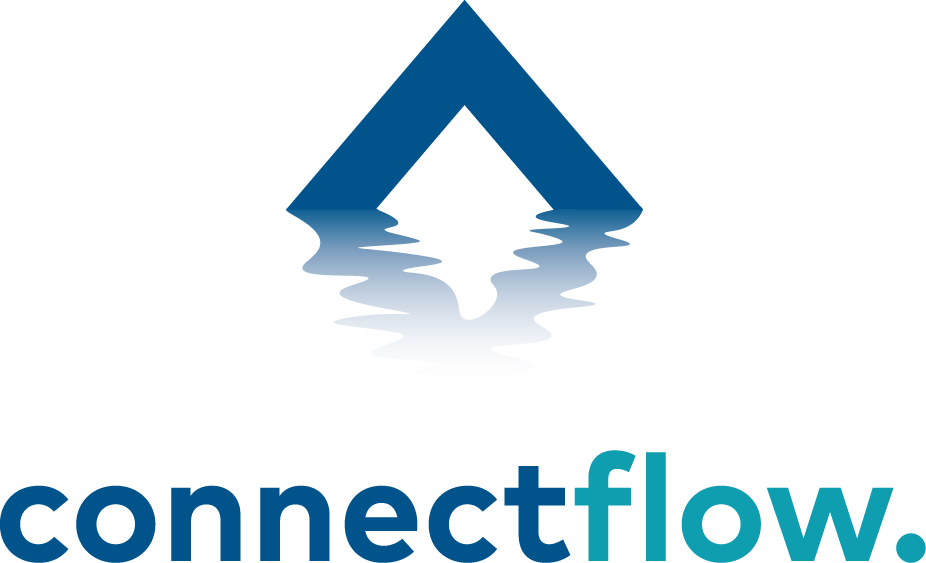ConnectFlow offers industry-leading capabilities in the representation of hydrogeology and hydrogeochemistry. The software provides a discrete representation of rock fractures and their role as fluid conduits, as well as the more classical continuous porous medium representation of subsurface flow. The software enables the construction of detailed environmental models to calculate groundwater flow and solute transport for a wide variety of physical conditions, using a range of advanced solvers. Models and their outputs can be visualised using ConnectFlow's versatile graphical user interface (GUI), which includes interactive options to support the user in the design and construction of models.
User interface
Powered by the state-of-the-art VTK graphics library, ConnectFlow's graphical user interface (GUI) provides users with advanced visualisation tools that can be applied to a wide range of three-dimensional subsurface data formats. Examples include visualisation of fracture networks, particle tracking pathlines or contaminant distributions.
In addition to visualisation, the GUI can also be used to construct and run ConnectFlow models from within the graphical environment. Support for interacting with other widely-used modelling packages is also included, for example GOCADŽ file formats, ECLIPSE grids, ESRI(TM) surfaces, and many others.


Simulation
ConnectFlow uses the finite-element approach for spatial discretisation of the modelled region. This is a powerful approach that is well suited to modelling complex geometric domains, such as those that occur in geological environments. ConnectFlow uses a highly efficient finite-element implementation, allowing it to handle large site- and regional-scale models consisting of many millions of grid cells or fractures. Temporal discretisation is achieved using either the Crank-Nicolson method or Gear's method. Non-linearities are treated using the Newton-Raphson iterative method, which converges rapidly given suitable initial conditions. Parameter stepping is implemented for highly non-linear problems, to overcome potential convergence difficulties.
A range of solvers are implemented in ConnectFlow, including an efficient Frontal direct method, the Generalised Minimum Residual (GMRES) iterative method and the algebraic multi-grid (AMG) iterative method. A range of preconditioners can also be applied to help with stability and convergence.
Reactive Transport
ConnectFlow supports inclusion of hydrogeochemical reactions in multi-component solute transport calculations in both the CPM and DFN modules. This is achieved by linking ConnectFlow to the USGS geochemical software PHREEQC, using the iPhreeqC library. ConnectFlow can be used to model the following types of reaction in transport calculations:
- Equilibrium reactions
- Ion-exchange reactions
- Surface complexation
- Kinetic reactions
Upscaling
Upscaling is the process in which a DFN model is converted to an equivalent CPM (ECPM) model. This can be helpful if the ECPM representation allows faster calculation times or a functionality not available for DFN (such as heat transport). Upscaling is achieved by dividing the DFN model region into a three-dimensional grid of cells. Effective properties (i.e. porosity, permeability tensor, flow-wetted surface) are then calculated for each cell using a least-squares method, such that the characteristics of the fracture network are replicated (on average) in the ECPM model. Algorithms for geometric, flow-based and transport-based upscaling are available in ConnectFlow. The process can be subdivided across multiple calculations to reduce calculation run-times.

Capability summary
The table below lists ConnectFlow's main capabilities, and which modules they are supported by:
|
Capability |
CPM |
DFN |
Combined |
|---|---|---|---|
|
Physical Processes |
|||
|
Groundwater flow |
✔ |
✔ |
✔ |
|
Groundwater flow and heat transport |
✔ |
|
|
|
Unsaturated groundwater flow |
✔ |
✔ |
✔ |
|
Unsaturated groundwater flow and heat transport |
✔ |
|
|
|
Radionuclide transport |
✔ |
|
|
|
Radionuclide transport in unsaturated flow |
✔ |
|
|
|
Coupled groundwater flow and multi-component solute transport |
✔ |
✔ |
|
|
Coupled flow, multi-component solute and heat transport |
✔ |
|
|
|
Rock matrix diffusion |
✔ |
✔ |
|
|
Reactive (with chemical reactions) transport |
✔ |
✔ |
|
|
Anion exclusion |
✔ |
|
|
|
Solute sorption (standard and 'smart' Kd) |
✔ |
|
|
|
Radioactive decay and ingrowth chains |
✔ |
|
|
|
Deterministic fracture specification |
✔ |
✔ |
✔ |
|
Random fracture network generation |
|
✔ |
✔ |
|
Random fracture network conditioning |
|
✔ |
|
|
Particle tracking |
✔ |
✔ |
✔ |
|
DFN upscaling to equivalent CPM (ECPM) |
|
✔ |
|
|
Boundary Conditions |
|||
|
Specified value (Dirichlet) (spatially and temporally varying) |
✔ |
✔ |
✔ |
|
Specified flux (Neumann) (spatially and temporally varying) |
✔ |
✔ |
✔ |
|
Recharge-discharge |
✔ |
✔ |
|
|
Hydrostatic (no-flow) |
✔ |
✔ |
✔ |
|
Zero-dispersive flux |
✔ |
✔ |
|
|
Point sinks/sources |
✔ |
✔ |
|
|
River, lake and sea boundary conditions |
✔ |
|
|
|
User-specified boundary conditions (custom code) |
✔ |
✔ |
✔ |
|
Graphical User Interface |
|||
|
Form-based model and calculation design/specification |
✔ |
✔ |
✔ |
|
User input validation |
✔ |
✔ |
✔ |
|
Real-time job control |
✔ |
✔ |
✔ |
|
Help and tutorials |
✔ |
✔ |
✔ |
|
3D visualisation of models, inputs and outputs |
✔ |
✔ |
✔ |
|
Compatibility with third-party file formats |
✔ |
✔ |
✔ |
|
Calculation Options |
|||
|
Steady-state and transient calculations |
✔ |
✔ |
✔ |
|
Choice of solvers (frontal, GMRES, AMG) |
✔ |
✔ |
✔ |
|
Choice of preconditioners (AMG, ILU) |
✔ |
✔ |
✔ |
Quality assurance
ConnectFlow is developed under a Quality Assurance programme that conforms to the ISO 9001 international standard. A verification document is available from the Downloads section of the website.
Compatibility
ConnectFlow can read, write and visualise many open-source and third-party file formats:
- AutoCAD DXF format (.dxf)
- GoCAD Tsurf (.tfc, .ts), polyline (.gpl) and vset (.vs) files
- ESRI raster (.asc) and shape (.shp) files
- FracMan FAB files (.fab)
- Ordnance Survey Landform Profile files in National Transfer Format (.ntf)
- XYZ surface and polyline files (.xyz)
- Eclipse GRDECL grids (.dat)
- Reservoir fracture set intensity files (.rfi)
- Seismic SEG-Y format (.segy, .sgy)
- Stanford polygon files (.ply)
- SURPAC String (.str) and DTM (.dtm) files
We can often produce bespoke readers and writers for proprietary file formats.
